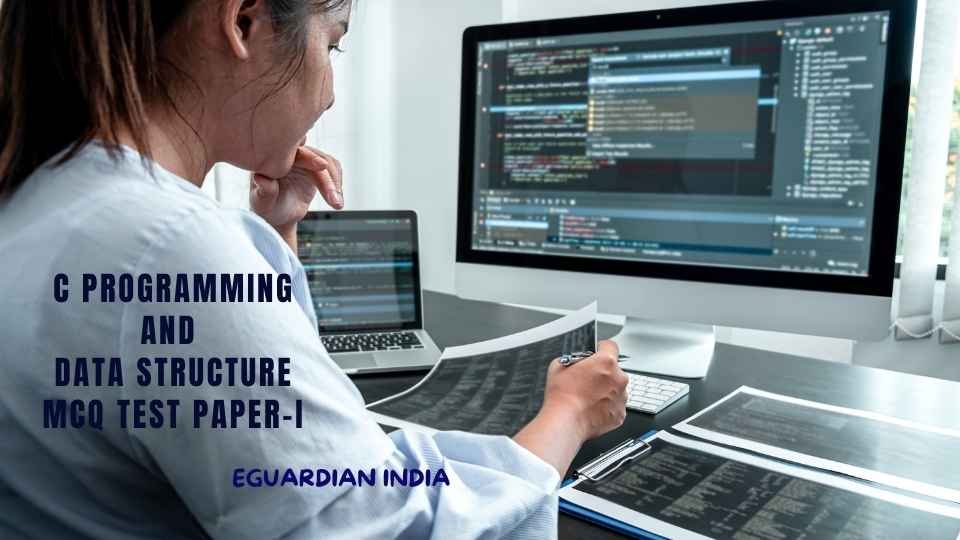Data Communication MCQ with Answers pdf for MCA, BCA, MSC IT. Data Communication and Networking MCQs with Answers pdf download.

1. Communication is the exchange of ideas, thoughts and feelings between two persons, places or points. (True or False)
Ans. True
2. Communication System is a system or facility capable of providing ___ transfer between persons or equipment.
Ans. Information
3. The medium that carriers the information signal is called the transmission channel. (True or False)
Ans. True
4. Communication with the help of words is known as ___ communication.
Ans. Verbal
5. The ___ accepts the signal from the transmission system and converts it into a form that can be handled by the destination device.
Ans. receiver
6. ATM stands for ___.
Ans. asynchronous transfer mode
7. PSTN stands for ___.
Ans. the public switched telephone network
8. The purpose of the Internet is to interconnect end systems, called ___.
Ans. hosts
9. (WAN stands for ___.
Ans. wide area network
10. CPE stands for ___.
Ans. customer premises equipment
11. In the sciences and engineering, the process of decomposing a function into simpler pieces is often called ___.
Ans. Fourier analysis
12. The Fourier transform of a ___ function, sP(t), with period P, becomes a Dirac comb function.
Ans. periodic
13. An ___ channel transmits continuously varying signal such as sine waves.
Ans. analog
14. In the modulation process a high-frequency periodic waveform is called the___.
Ans. Carrier signal
15. QAM stands for ___.
Ans. Quadrature amplitude modulation
16. A guided transmission medium is the point to point if it provides a direct link between two devices and those are the only two devices sharing the medium. (True or False)
Ans. True
17. In ___ the same signal pattern repeats over time.
Ans. periodic signal
18. The principal disadvantage is of digital signals is that digital signal suffers more from ___ than do analog signals.
Ans. attenuation
19. The maximum rate at which data can be transmitted over a given communication path under given conditions is referred to as ___.
Ans. channel capacity
20. According to Shannon’s, channel capacity is given by the equation C = C log2 (1+ SNR).
(True / False).
Ans. False
21. ___ is the loss of energy as the signal propagates outward.
Ans. Attenuation
22. ___ is the loss of energy as the signal propagates outward.
Ans. Attenuation distortion
23. Twisted pair can be used for both analog and digital transmission. (True or False)
Ans. True
24. The basic principle used in optical fiber is ___.
Ans. Total internal reflection
25. Frequencies in the range of about 1 GHz to 40 GHz are referred to as ___.
Ans. microwave frequencies
26. GPS stands for ___.
Ans. Global Positioning System
27. Radio is a general term used to encompass frequencies in the range of ___.
Ans. 3 kHz to 300 GHz
28. ___ is an example of ground wave propagation.
Ans. AM radio
29. ___ of one medium relative to another is the sine of the angle of incidence divided by the sine of the angle of refraction.
Ans. Refractive index
30. Peak attenuation occurs in the vicinity of ___ GHz due to water vapour and at frequencies below ___GHz, the attenuation is less.
Ans. 22, 15
31. Data may be transmitted using a carrier signal by ___.
Ans. Modulation
32. How many numbers of possible encoding techniques are there?
Ans. Four
33. In ___ signalling, one logic state is represented by a positive voltage level, and the other by a negative voltage level.
Ans. Polar
34. In the ___ scheme, binary 1 is represented by the absence of a line signal, and binary 0 by alternating positive and negative pulses.
Ans. Pseudo ternary
35. QPSK stands for ___.
Ans. Quadrature Phase Shift Keying
36. QAM stands for ___.
Ans. Quadrature Amplitude Modulation
37. ___ _is based on the sampling theorem.
Ans. Pulse code modulation
38. Nonlinear encoding can significantly improve the PCM ___.
Ans. SNR ratio
39. Modulation permits ___.
Ans. Frequency division multiplexing
40. A variant of AM called single sideband (SSB), sends both the sidebands and the carrier.
(True or False)
Ans. False
41. Digital communication provides higher security. (True /false?).
Ans. True
42. The source signals are generally referred to as ___ signals.
Ans. Baseband
43. An alias is a false lower frequency component that appears in sampled data acquired at too high a sampling rate. (State True / False?)
Ans. False
44. This sampling rate is called ___.
Ans. Nyquist rate
45. ___is the simplest form of waveform coding wherein analogue signals are encoded into a digital signal.
Ans. Pulse Code Modulation
46. In delta modulation, the transmitted data is reduced to a ___ data stream.
Ans. 1-bit
47. DPCM stands for ___.
Ans. Differential Pulse Code Modulation
48. In ADPCM, the predictor and quantizer are ___.
Ans. Adaptive
49. ___is a form of modulation that represents digital data as variations in the amplitude of a carrier wave.
Ans. Amplitude-shift keying (ASK)
50. BFSK stands for ___.
Ans. Binary frequency-shift keying
51. PSK is sometimes called ___ modulation
Ans. biphase
52. Communication protocols are at the heart of data communications. (State True /False?).
Ans. True
53. In guided transmission media, you can see a cabling system that guides the data signals along a specific path.(True or False)
Ans. True
54. ___ is a technique for detecting errors in digital data.
Ans. CRC
55. ARQ stands for ___.
Ans. Automatic Repeat request
56. In half-duplex transmission two stations on a point-to-point link can transmit at a time. (True/False)
Ans. False
57. The two key mechanisms used in data link control are ___ and ___.
Ans. Flow control, Error control
58. The simplest form of flow control is known as stop-and-wait flow control. (True/False).
Ans. True
59. ___is based on the stop-and-wait flow control technique.
Ans. Stop-and-wait ARQ
60. The window size limitation is more restrictive for go back-N than for selective-reject. (True/False).
Ans. False
61. HDLC stands for ___.
Ans. Data Link Control Protocol
62. ___ provide supplemental link control functions.
Ans. U-frames
63. ___ employs an antenna for transmitting through air, vacuum or water.
Ans. Unguided media
64. Time-division multiplexing (TDM) is a ___ technique.
Ans. digital multiplexing
65. Telephone companies implement TDM through a hierarchy of digital signals called ___ service.
Ans. digital signal (DS)
66. In statistical time-division multiplexing, slots are dynamically allocated to improve ___.
Ans. bandwidth efficiency
67. The frames in statistical TDM need not be synchronized, so we do not need synchronization bits. (True / False?)
Ans. True
68. The designers of statistical TDM define the capacity of the link based on the statistics of the load for each channel. (True / False?)
Ans. True
69. ADSL stands for ___.
Ans. Asymmetric Digital Subscriber Line
70. ADSL provides more capacity upstream than downstream. (True or false?)
Ans. False
Download in pdf Data Communication MCQ with Answers
Data Communication MCQ with Answers: Set-1
Thanks for your trust in our website, if you like the post on Data Communication MCQ with Answers pdf please share it on social media.



